Rio de Janeiro is the traditional cultural capital of Brazil and the art scene continues to be vibrant throughout the city.
The museums of Rio are surprising for their number, their variety, their quality, and the participatory experience they offer visitors. The photos in this collection provide a few examples of what you can expect to find in Rio's museums.
the musuem scene
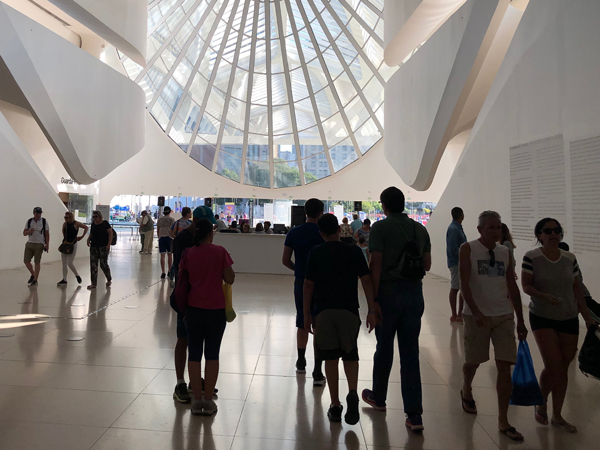
While many of the museums are located in classic historic buildings, the trend has been to build dramatic modern designs.
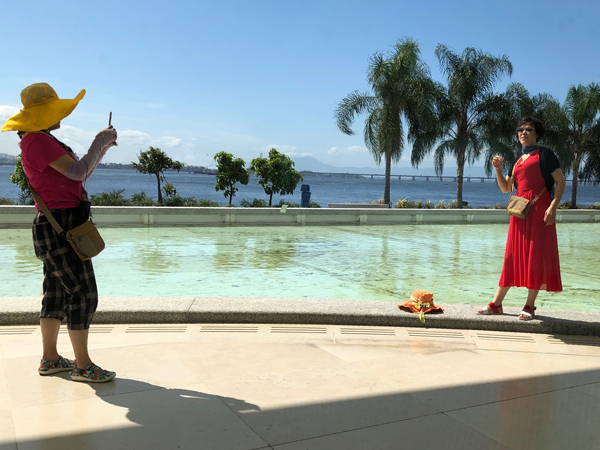
This back veranda of one of the museums offers a view of Guanabara Bay. It makes a perfect place for creating photographic memories of the visit.
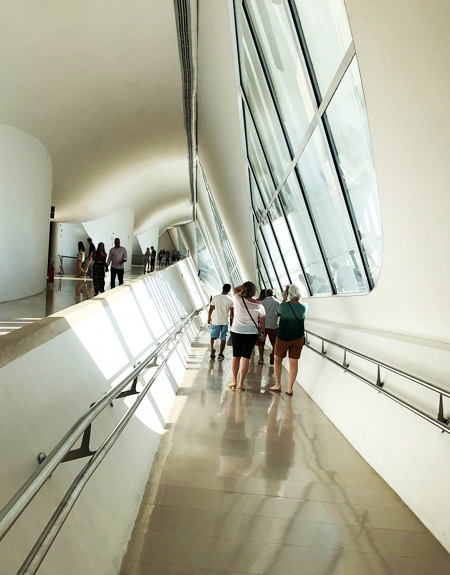
The modern architecture makes moving from one part of the museum to another into an experience in itself.
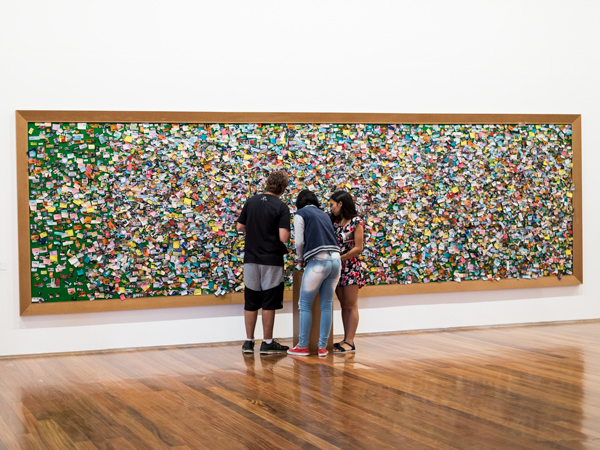
Many of the museums are designed to offer participatory experiences, such as this large work which is made entirely of things added by visitors.
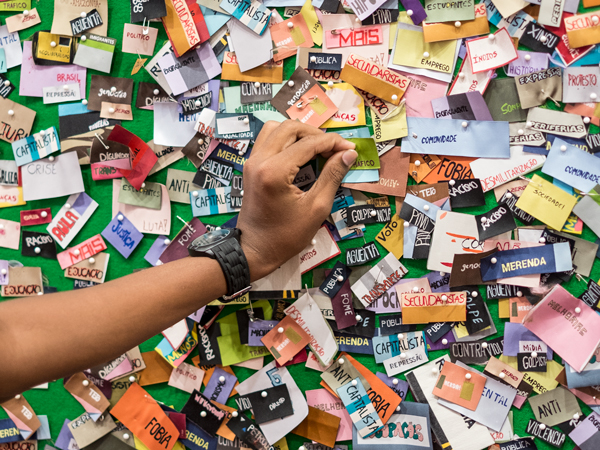
Here a visitor is pinning her contribution to the artwork pictured in the previous photo.
Exhibits include large electronic murals that put visitors inside the scenes.
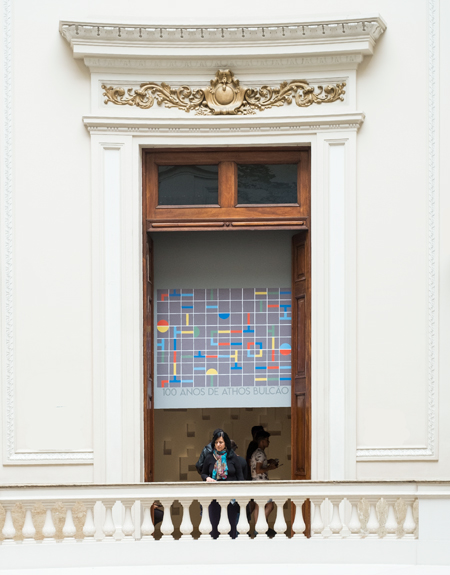
Modern designs look at home in classic historic buildings.
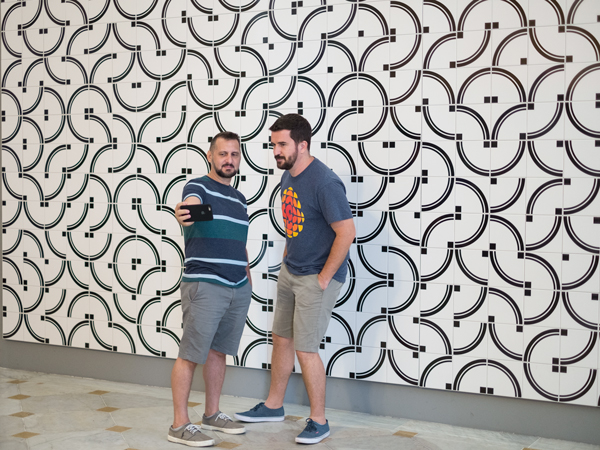
Museum visitors create memories by making selfies in front of exhibits. This exhibit of the works of Brazilian graphic artist Athos Blucão provides a perfect backdrop.
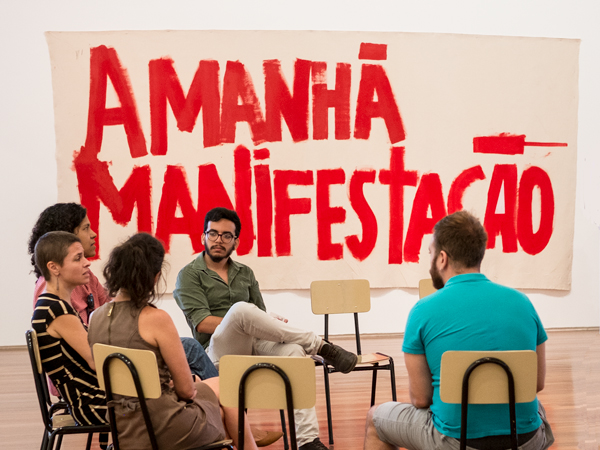
Museums are places for meetings and other activities. The people in this group are not actually planning a political demonstration for the next day as indicated in the huge sign behind them, but the sign does illustrate the attitude that museums should be places where disruptive activities can occur, not just places for passive observation.
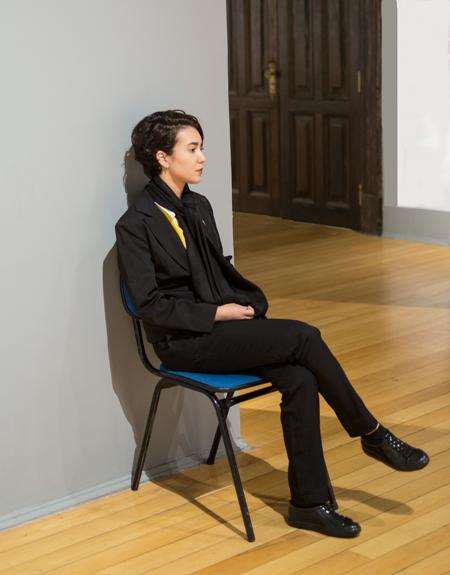
This lady is a museum guard, but she looks almost like a work of art herself.
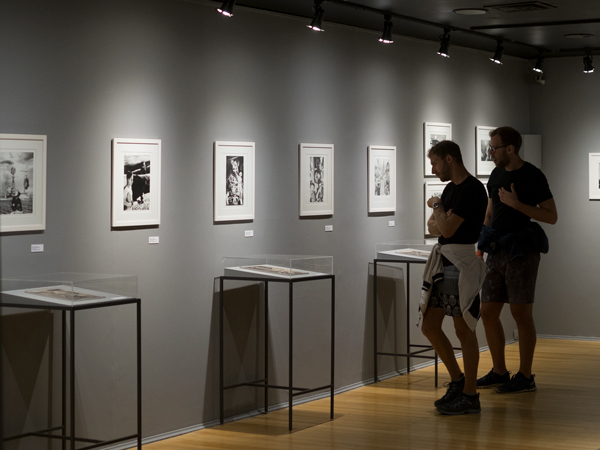
Like most museums, the ones in Rio provide a variety of different kinds of exhibits settings as well as different kinds of media to be displayed.
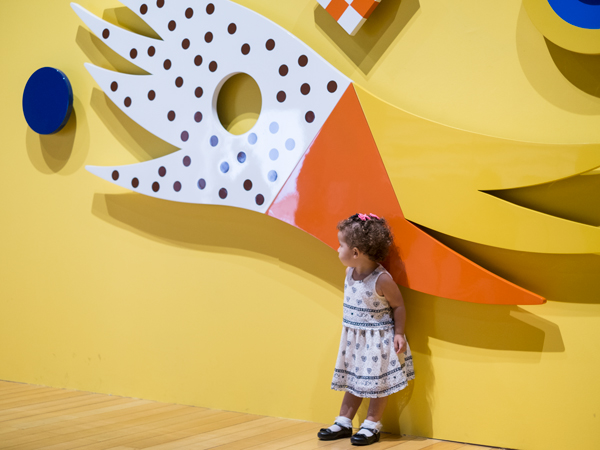
This little girl is attracted to the bright colors and strong designs of this installation.
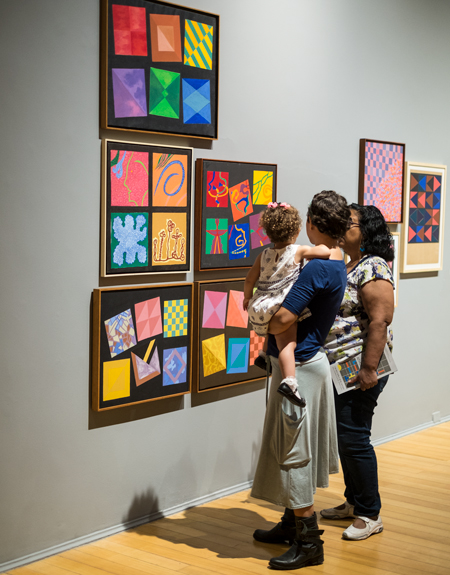
The same girl pictured in the previous photograph is attracted to the other bright designs by the same artist.
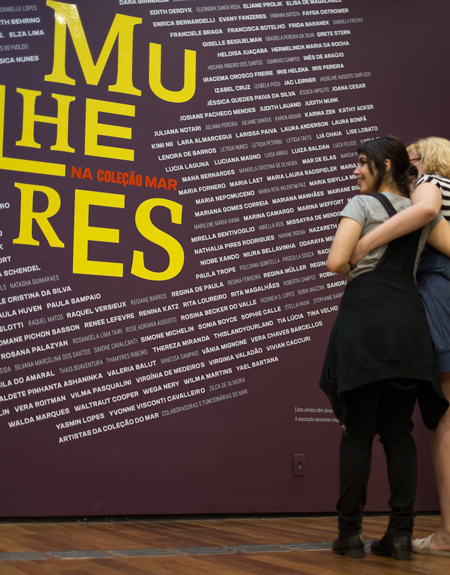
The title on the board the ladies are facing is "Women" ("Mulheres"). It is the introductory panel for an exhibit.
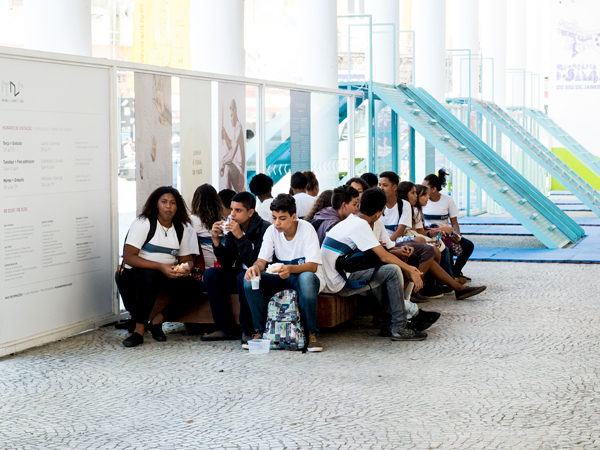
This group of school visitors has found a comfortable place for a snack and a rest after the visit to a museum, but the setting makes them almost a work of art in their own right.
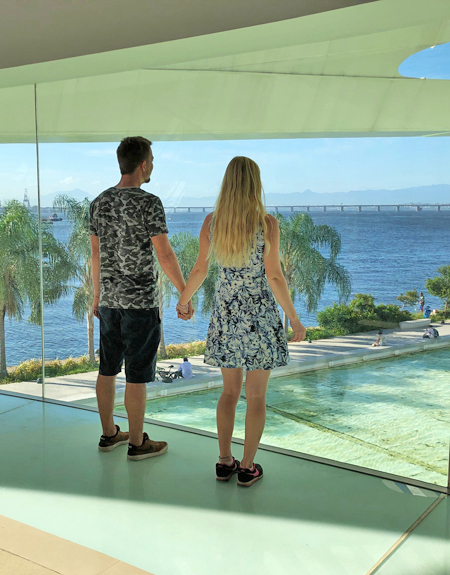
The integration of this museum's architecture into its setting on Guanabara Bay creates dramatic vistas.
examples of the varieties of works to be found in the museums
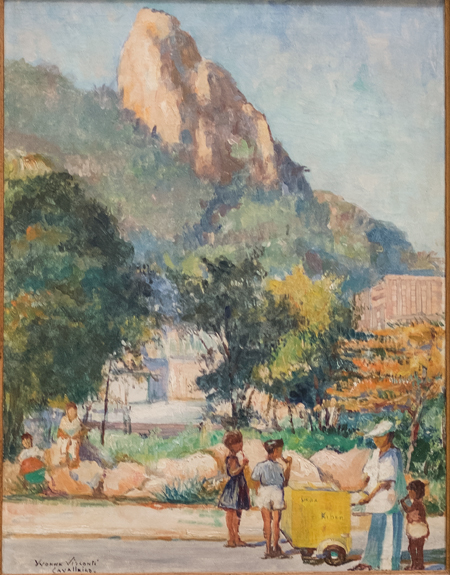
This painting, with Sugar Loaf in the background, dates from an earlier and more tranquil urban existence. Even at the time it was painted, Rio was an active and busy city. What we see pictured here is a privileged residential quarter of Rio.
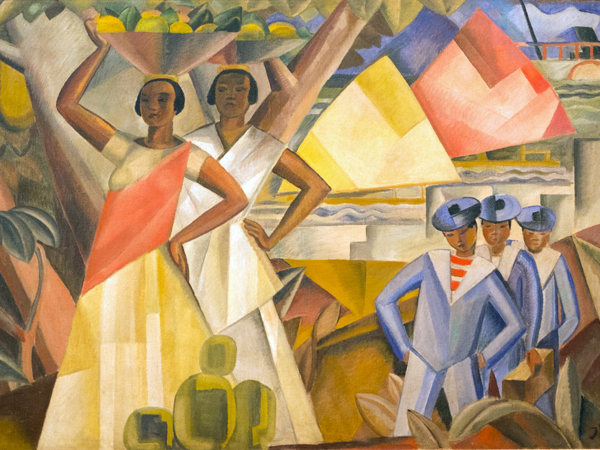
Brazilian art, of course, was highly influenced by European trends ...just as was American art. In this painting we see European style applied to a tropical scene.
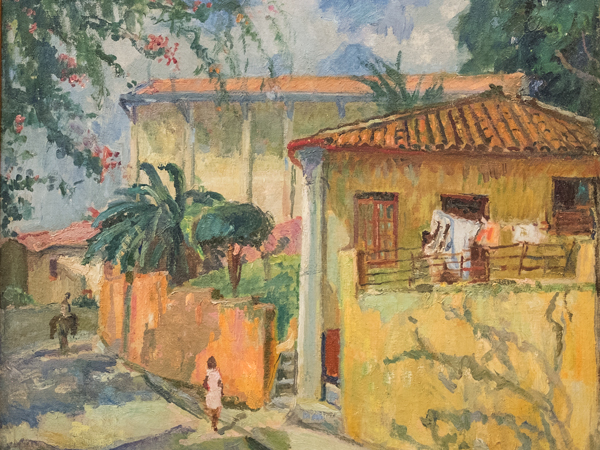
This is probably a scene from Santa Teresa, a hillside residential neighborhood near Rio's urban center. Despite the passage of years, Santa Teresa continues to be a quiet part of Rio.
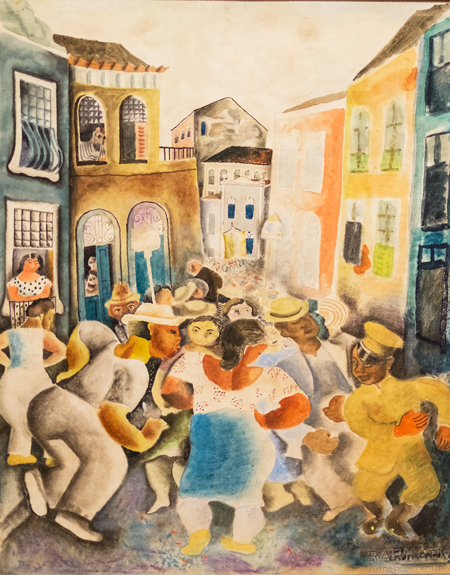
Rio de Janeiro has always had a fun-loving character.
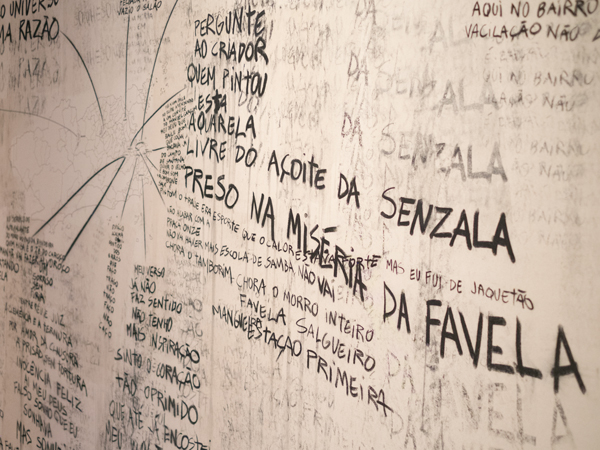
"Free from the whip of the slave quarters, trapped in the misery of the favela." This modern painting is a social protest against the position of Afro descendants in Brazilian society. ("Favelas" are the large areas of poor and substandard housing, usually unauthorized, that are sprinkled throughout the urban area.
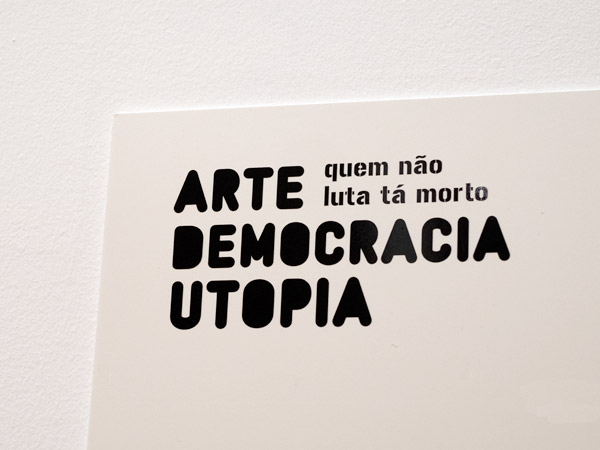
"Art, democracy, utopia ...who doesn't fight is dead."

This clothing depicts an era in the Afro cultural life of Rio.
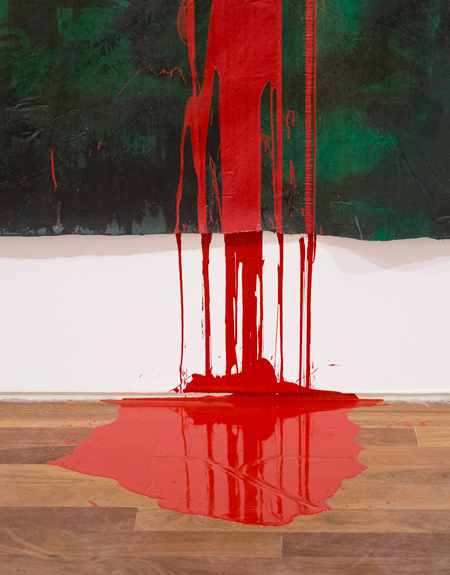
Oooops!
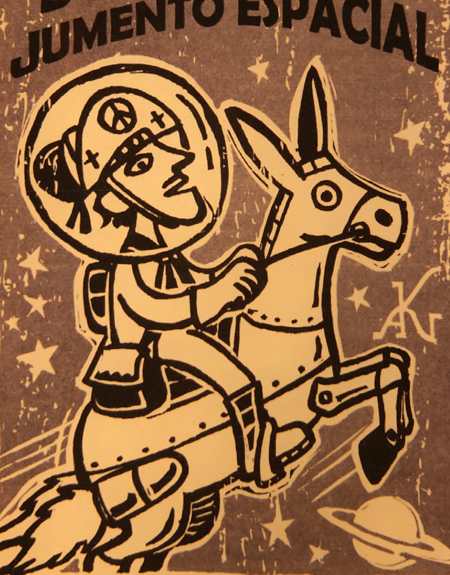
In the Northeast of Brazil, a literature developed that was directed to people of limited education and income. These short works were cheaply printed and were sold in public markets. Some are still produced today. On the cover of this work we see a cowboy in traditional garb from the Northeast riding a "Space Donkey". (It looks like it would be a good story!)
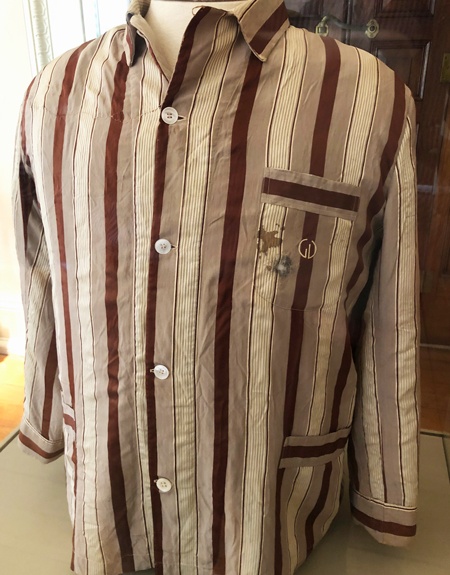
The old presidential palace in Rio de Janeiro has been made into a museum. Rio was the capital of Brazil for most of the nation's history and the palace in Rio was the residence of the most important president of the last century, Getúlio Vargas. These pajamas, on display in the museum, were the ones he was wearing when he committed suicide. You can see the powder marks left by the bullet over the pocket.
all photographs by

Rodger Randle


Rodger Randle

